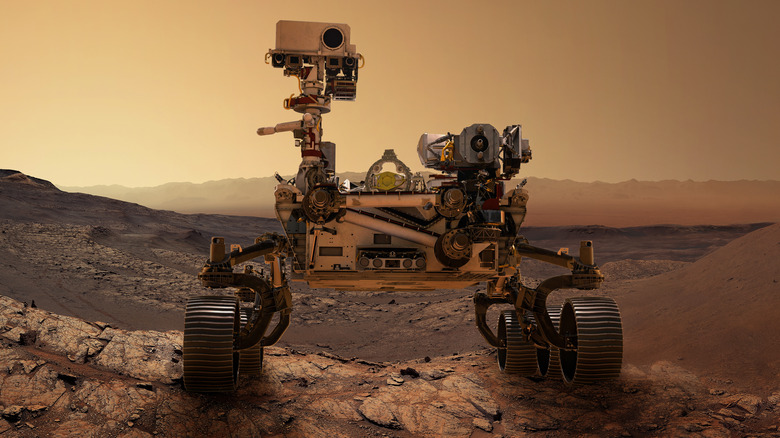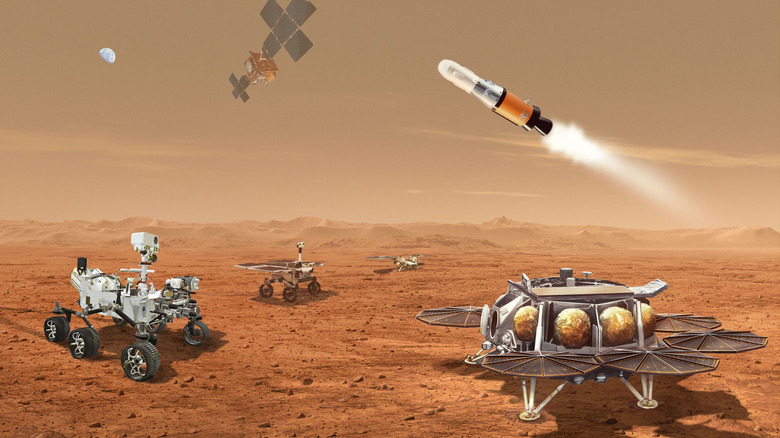How NASA Is Choosing The Landing Site For Its Next Mars Rover
NASA is currently exploring Mars with two rovers, one lander coming to the end of its life, and a range of orbital spacecraft. But the agency's long-term plans for Mars don't only involve sending robotic explorers to look at the Red Planet — they also involve bringing samples back to Earth. The ambitious Mars Sample Return mission has already begun its first step with the Perseverance rover, which is collecting samples of Mars rock and soil (called regolith) and sealing them in tubes to be left on the planet's surface.
A future mission will send another rover to collect these tubes and bring them to an ascent vehicle, which will launch them off the surface of Mars and pass them on to another spacecraft to bring them back to Earth (via NASA). This complex process requires a dizzying array of robots and spacecraft and will be a joint mission between NASA and the European Space Agency. Now, the next step for the mission is to pick out a landing spot where a sample return spacecraft could land. Fortunately, the Perseverance rover is on hand to help scout out potential landing sites in Mars' Jezero Crater.
"The Perseverance team pulled out all the stops for us, because Mars Sample Return has unique needs when it comes to where we operate," said Richard Cook, Program Manager for Mars Sample Return at NASA's Jet Propulsion Laboratory (via JPL). "Essentially, a dull landing place is good. The flatter and more uninspiring the vista, the better we like it, because while there are a lot of things that need to be done when we arrive to pick up the samples, sightseeing is not one of them."
Finding a parking lot on Mars
The ideal landing spot will have a 200-foot radius and will be totally flat, located within the Jezero crater, and close enough to where Perseverance is exploring to be able to pick up the samples the rover has deposited. The area needs to be not only flat as in lacking hills, but also lacking in large boulders or sand dunes, both of which can cause problems for a landing vehicle.
The team is able to get an idea of potential locations by looking at data taken by Mars orbiters, which can take images of the planet's surface at impressively high resolutions given how far away they are. But to really see the terrain up close and in detail, the team needs a closer view which they can get from the cameras on Perseverance. The rover has been scouting out areas that the team had flagged as potential landing sites — nicknamed landing strips due to their long straight shapes — and sending this data back to Earth.
"We had been eyeing these locations since before Perseverance's landing, but imagery from orbit can only tell you so much," said JPL's Mars Sample Return Systems Engineering & Integration manager, Al Chen. "Now we have some up-close-and-personal shots of the landing strip that indicate we were right on the money. The landing strip will more than likely make our shortlist of potential landing and caching sites for MSR."

